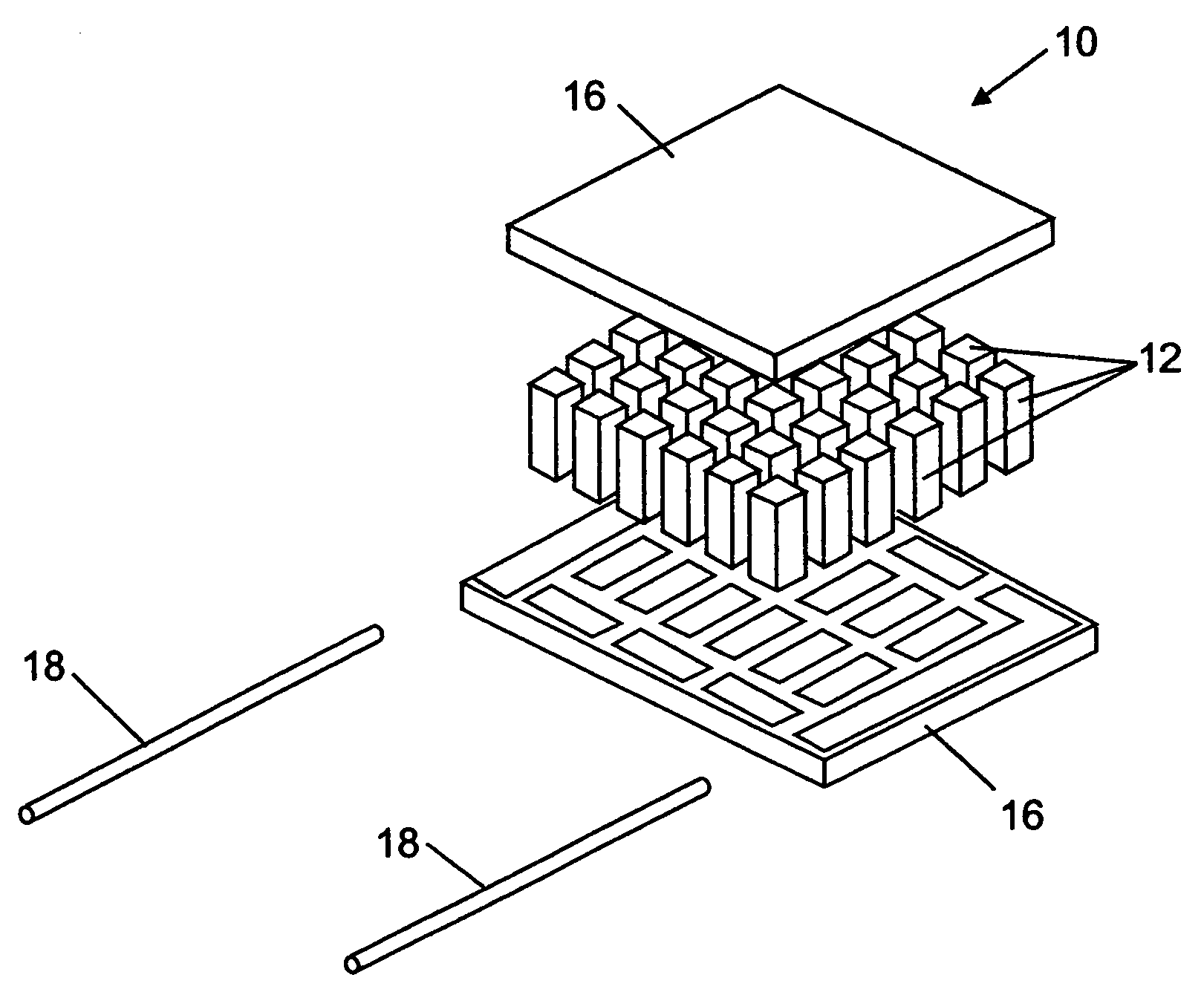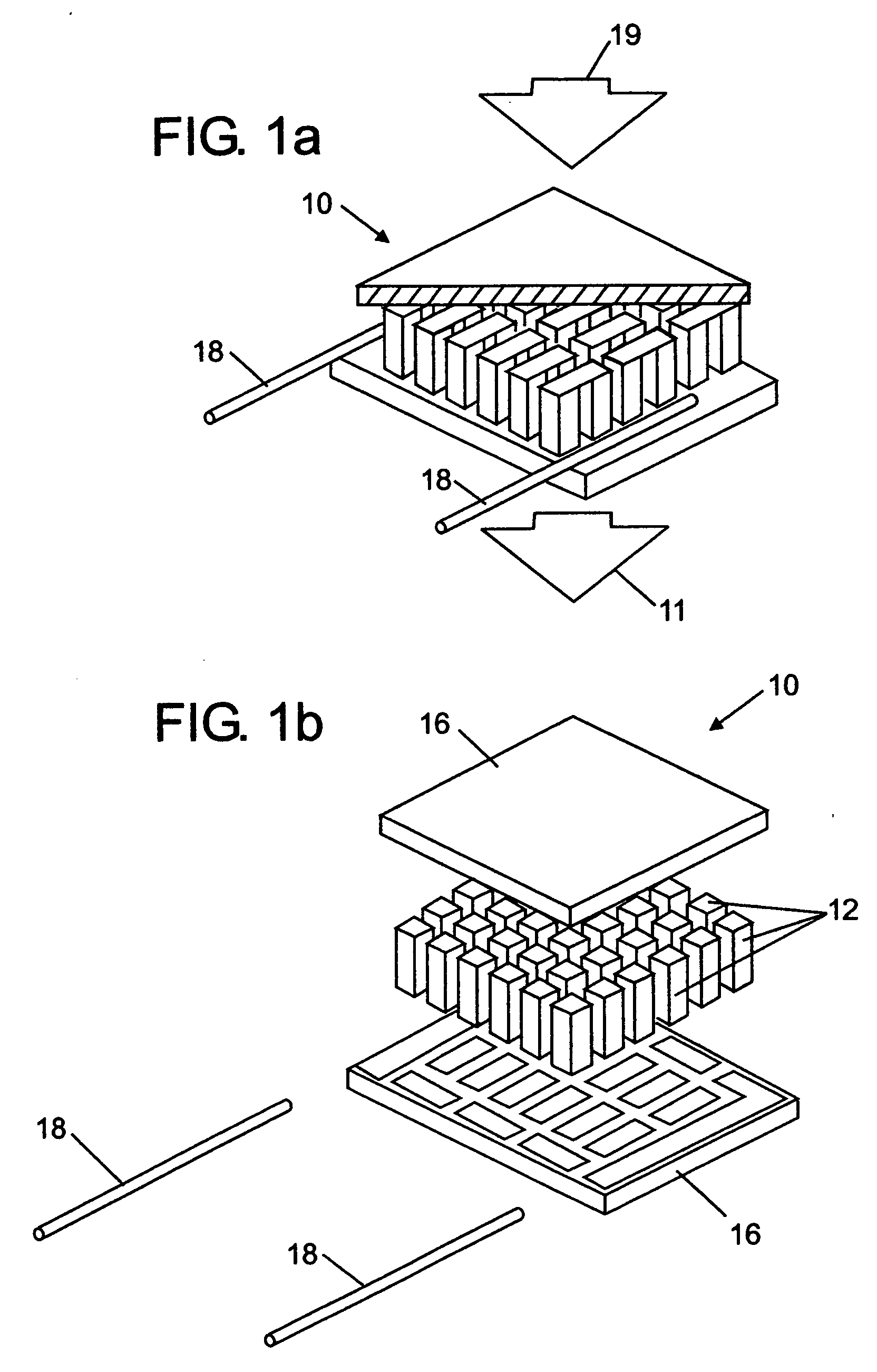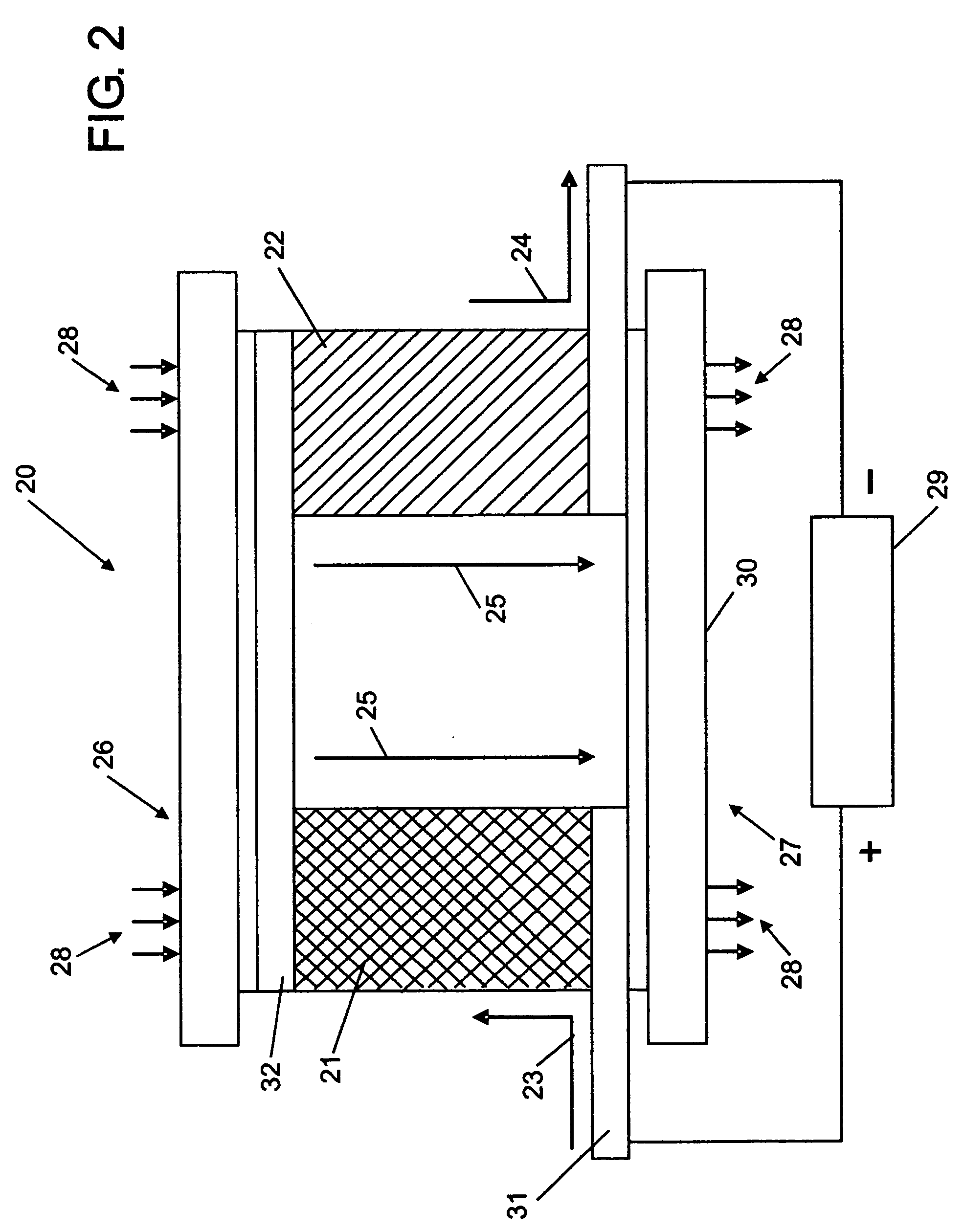Thermoelectric devices with controlled current flow and related methods
a technology of current flow and thermoelectric device, applied in the direction of thermoelectric device, electric apparatus, nanotechnology, etc., can solve the problem of relatively low operation efficiency of devices, achieve the effect of improving cooling performance, increasing thermal separation and isolation, and improving thermoelectric performan
- Summary
- Abstract
- Description
- Claims
- Application Information
AI Technical Summary
Benefits of technology
Problems solved by technology
Method used
Image
Examples
embodiment 170
[0077] Based on these principles, an example structure of thermal legs with current guidance and current control in a thermal leg is illustrated in FIG. 8. This figure shows a thermoelectric device embodiment 170 containing various interconnected thermal legs, such p-type thermal leg 171 and n-type thermal leg 172. Current 174 is directed through the device as shown by the arrows. Note that electrical current tends to flow more down the path containing less electrical resistance—thus resistances in the current path can be designed so as to direct the current in the desired direction. For example, the resistance of conductive material such as 173 is generally lower than the resistance of p-type semiconductive material such as 175 or the resistance of n-type semiconductive material such as 176. Electrical current 174 entering the hot junction 177 at the bottom is forced to pass through p-type semiconductive material 175 on its path to the cold junction 178 because the semiconductive m...
embodiment 240
[0127] It is also possible to create improved thermal leg embodiments and thermoelectric device embodiments by leveraging nanotechnology developments. FIGS. 17(a) and 17(b) are diagrams illustrating possible differences in the separation possible within thermoelectric legs according to some thermoelectric device embodiments of the present invention. FIG. 17(a) shows a thermoelectric leg embodiment 240 similar to some previously described. Thermal leg 240 contains various conductive material segments such as 243. In addition, the thermal leg contains various semiconductive material segments such as 244. The electric current flows through the semiconductive segments as shown by arrows 242. The possible separation 247 is determined by trading off the increase in thermal isolation against the increased electrical resistance. Ideally, it helps thermoelectric operation to increase the separation and resulting thermal isolation between the hot and cold junctions of the device. One way to a...
embodiment 260
[0130] FIGS. 19(a), 19(b), 19(c), and 19(d) illustrate some thermoelectric device structure embodiments and thermoelectric thermal leg embodiments according to the present invention. First, FIG. 19(a) illustrates a thermoelectric leg embodiment 260 which has guided and controlled electrical current flow through the leg. Conductive material segments, such as 266, 266(a), 266(b), and similarly designated conductive material areas are shown. Electrical currents, such as 264(a) and 264(b), enter the thermal leg in parallel from the left through conductive material segments in at least two points, such as through conductive material segments 266(a) and 266(b) respectively as shown. Insulators such as 261 and similarly designated insulating areas can be used to electrically isolate the different semiconductive material areas. In addition, the placement of the insulators as shown can cause each incoming current to divide, such as how current 264(a) is caused to split and enter p-type semic...
PUM
 Login to View More
Login to View More Abstract
Description
Claims
Application Information
 Login to View More
Login to View More - R&D
- Intellectual Property
- Life Sciences
- Materials
- Tech Scout
- Unparalleled Data Quality
- Higher Quality Content
- 60% Fewer Hallucinations
Browse by: Latest US Patents, China's latest patents, Technical Efficacy Thesaurus, Application Domain, Technology Topic, Popular Technical Reports.
© 2025 PatSnap. All rights reserved.Legal|Privacy policy|Modern Slavery Act Transparency Statement|Sitemap|About US| Contact US: help@patsnap.com



